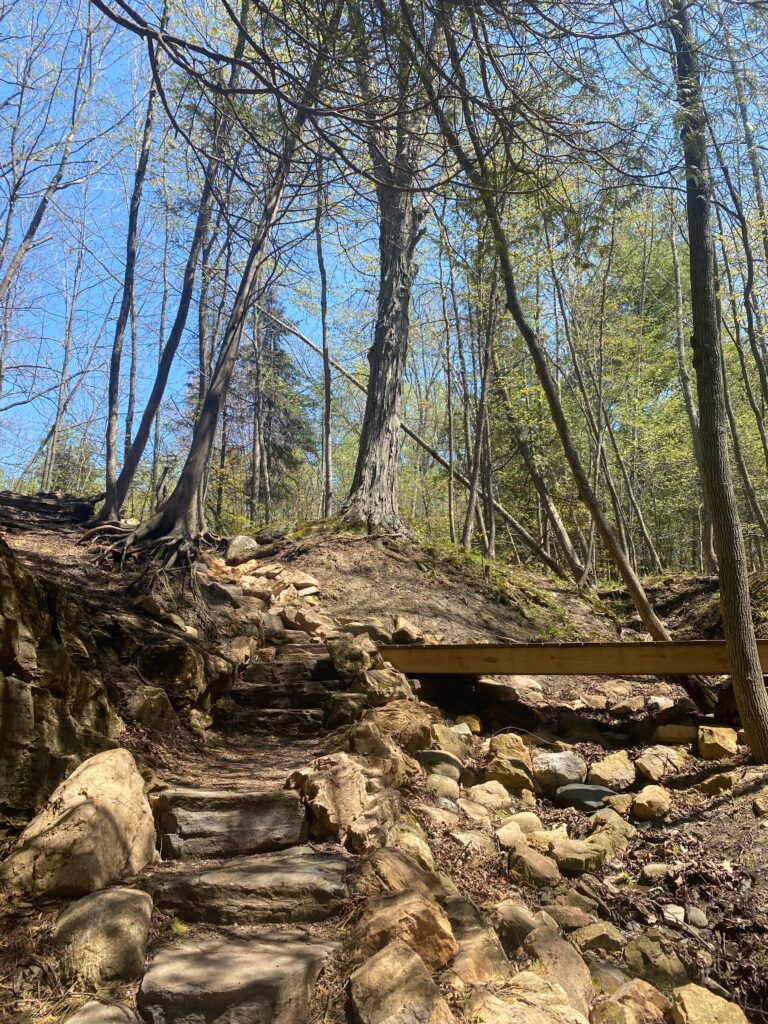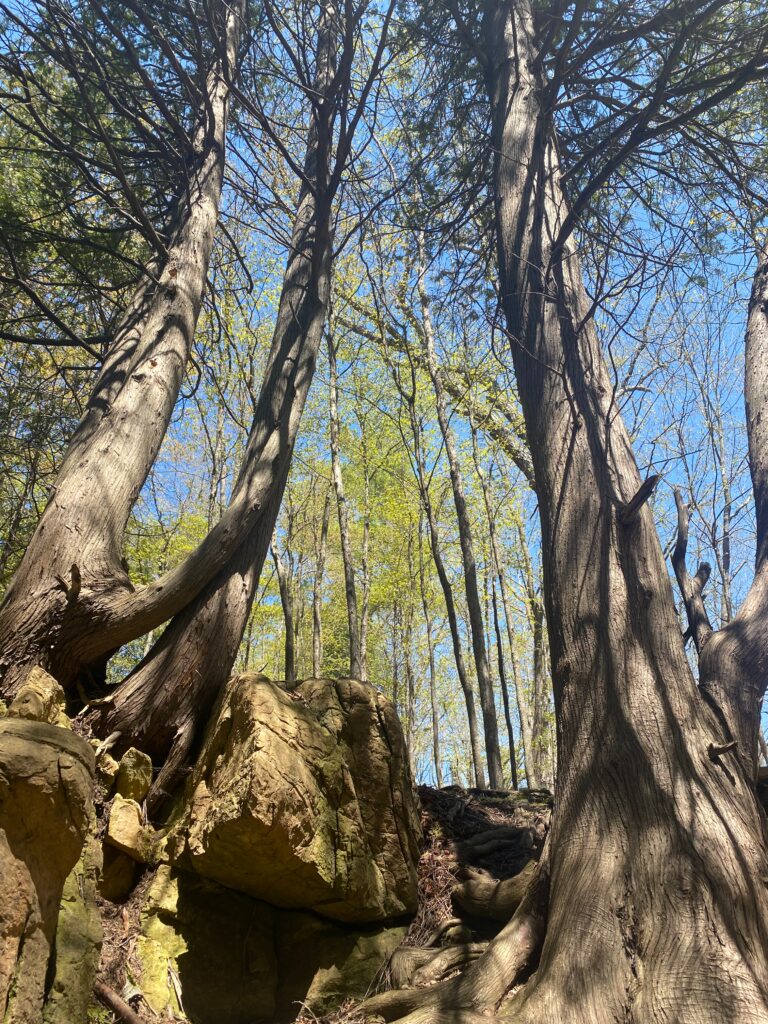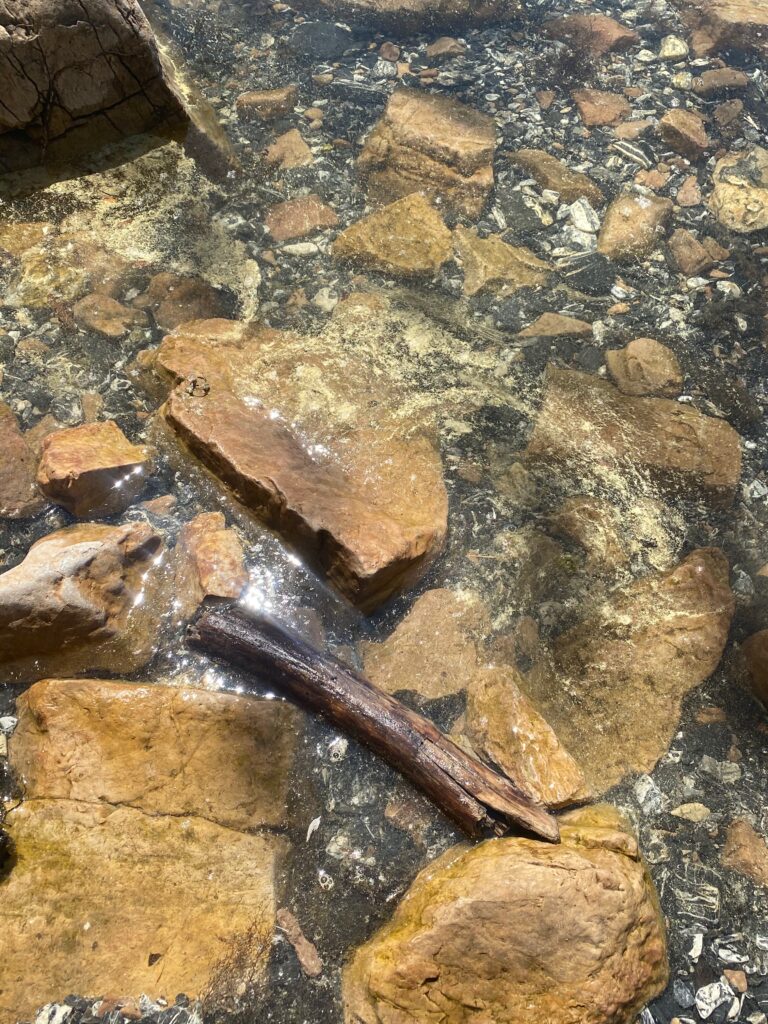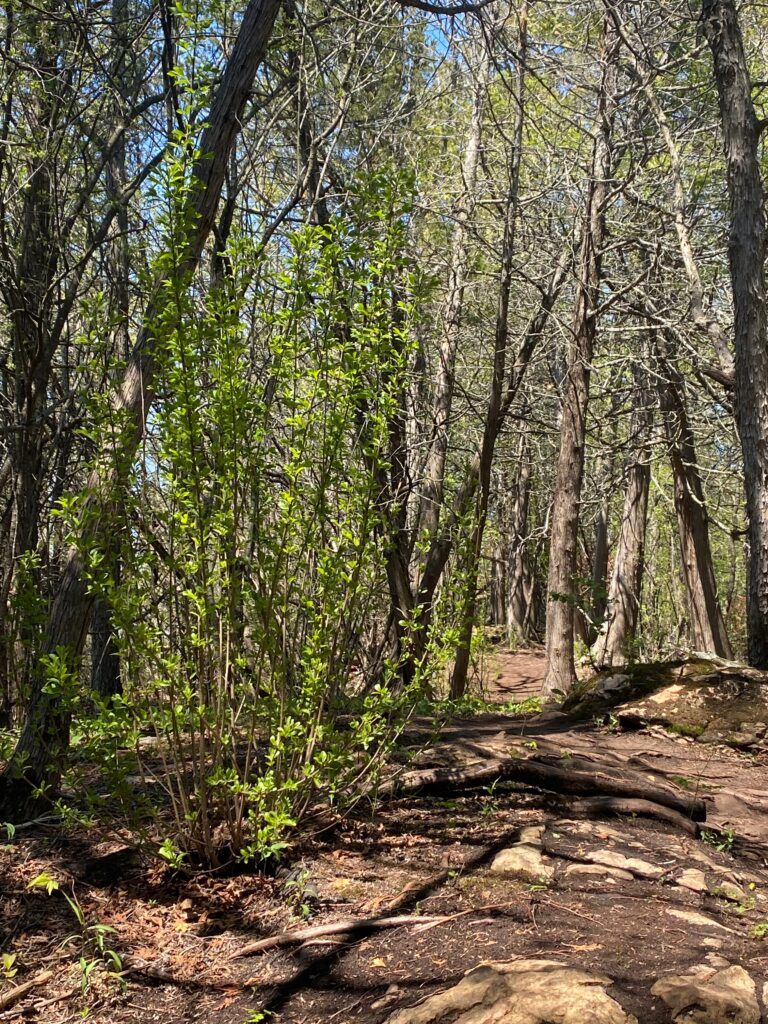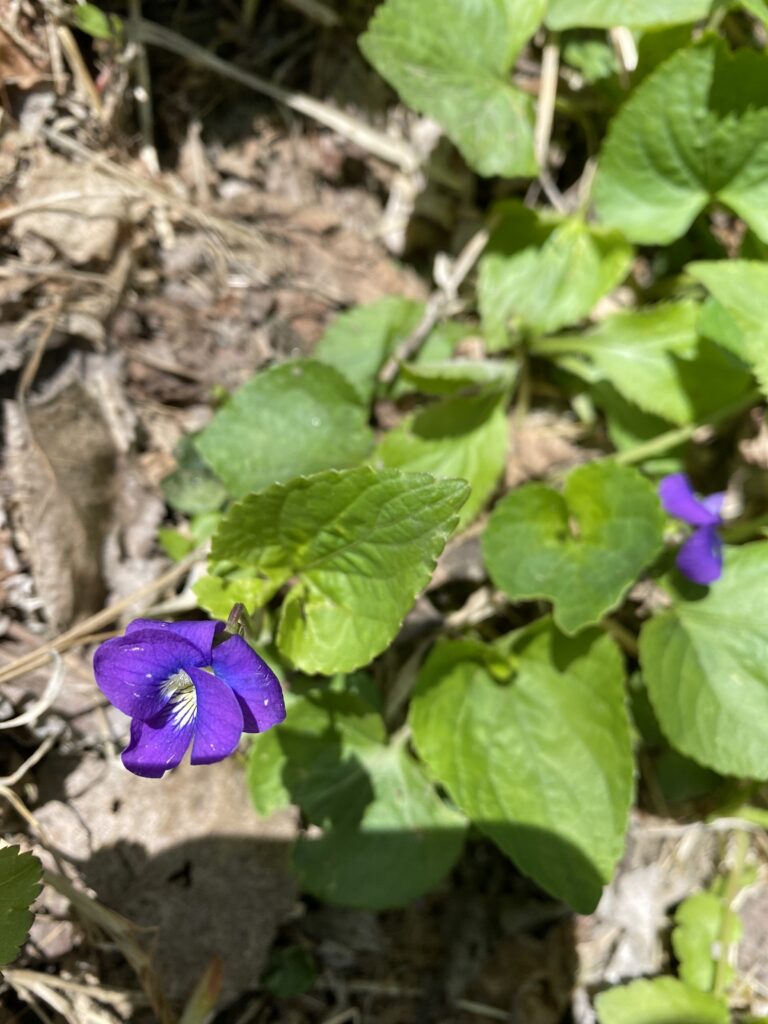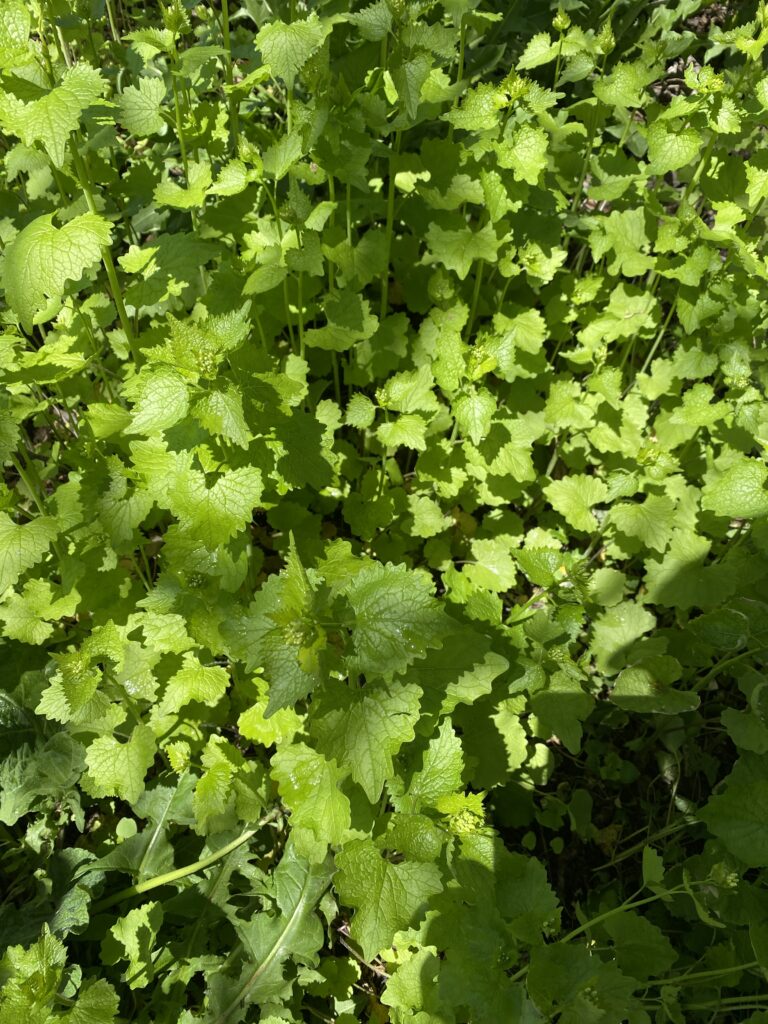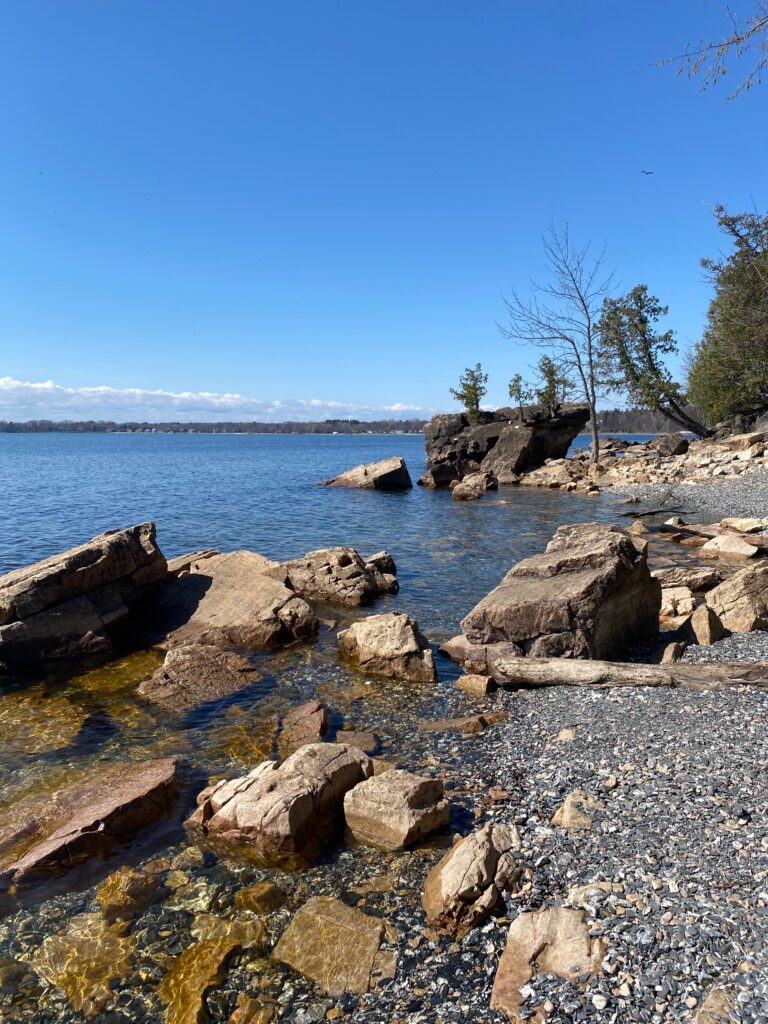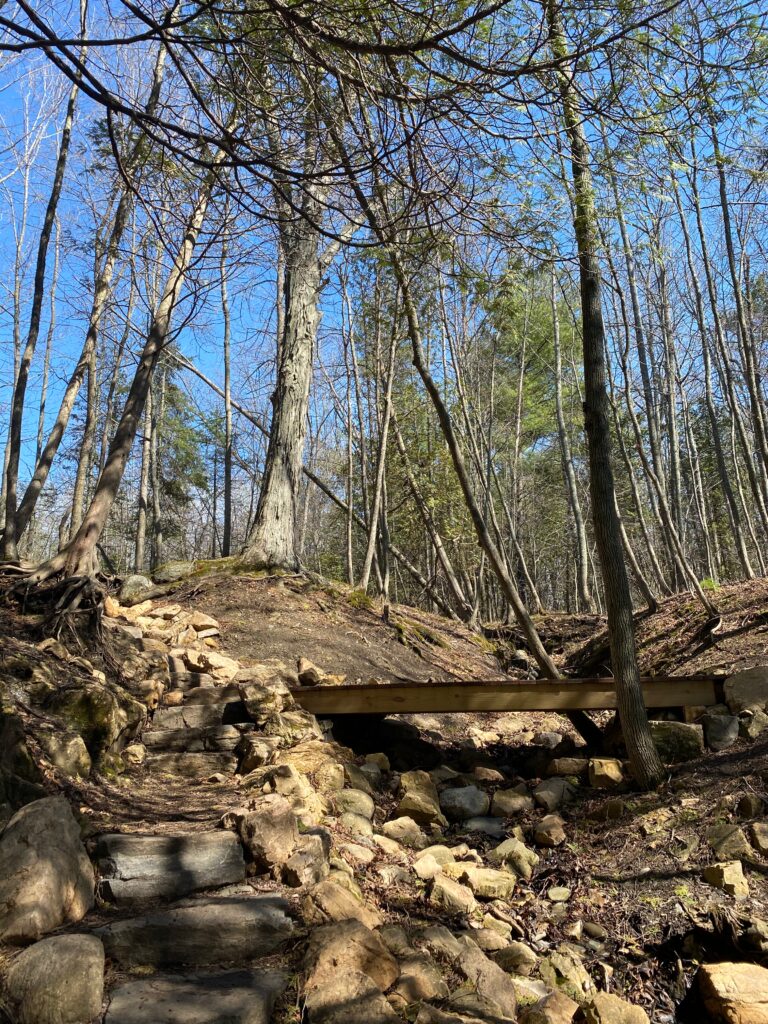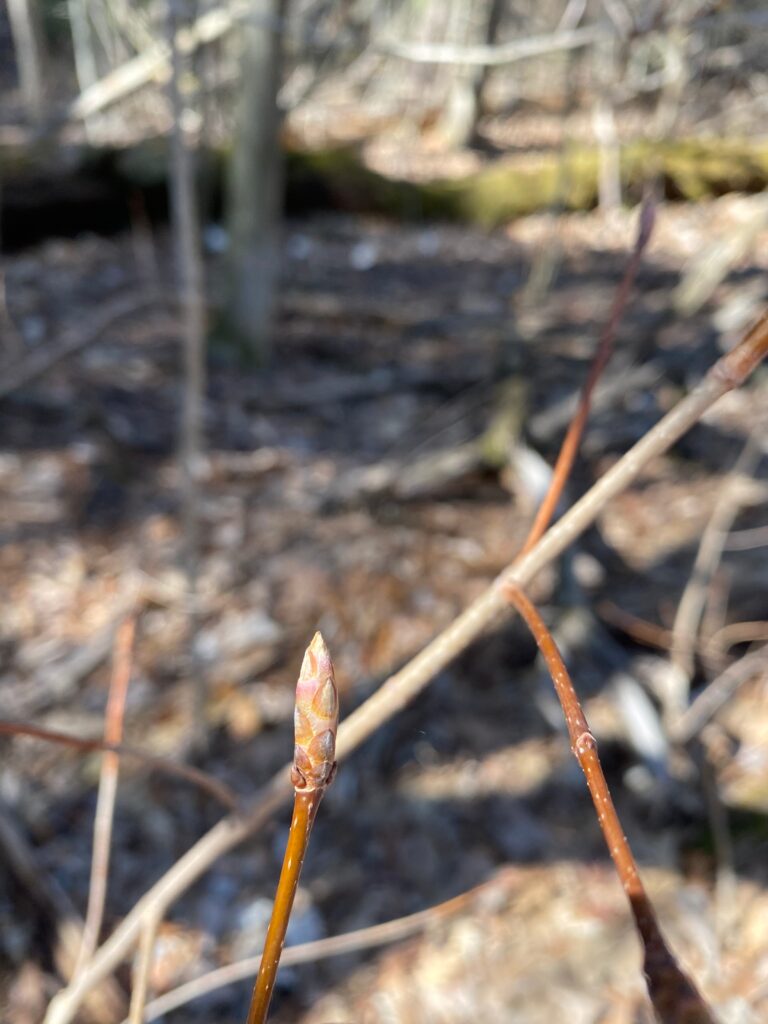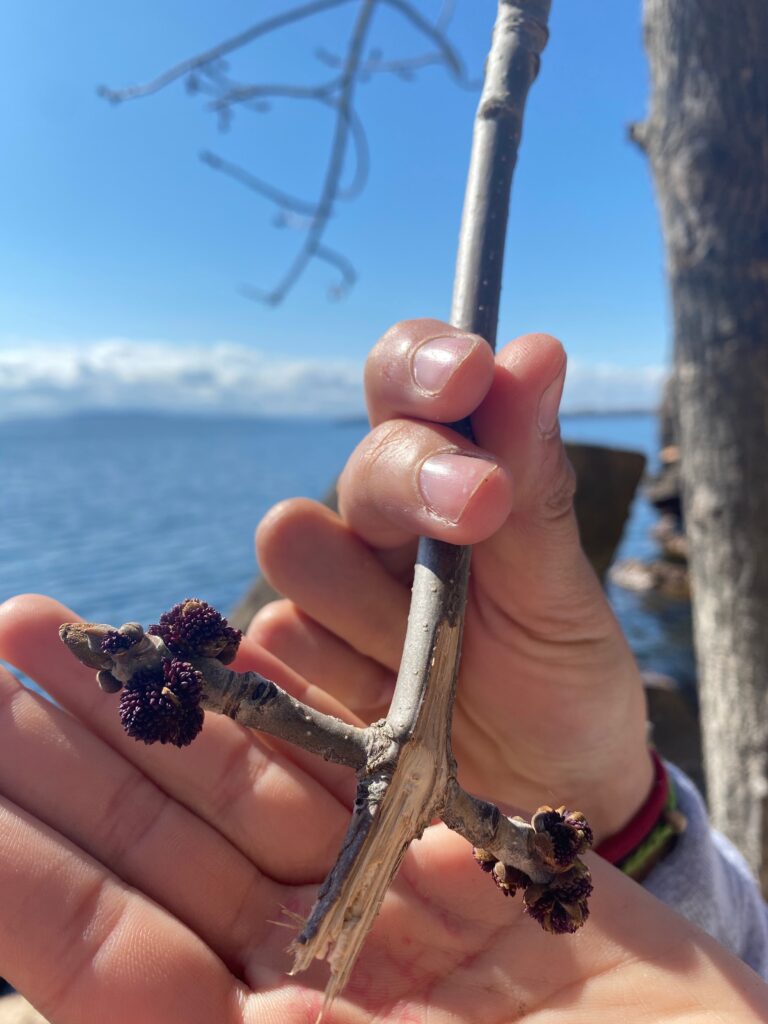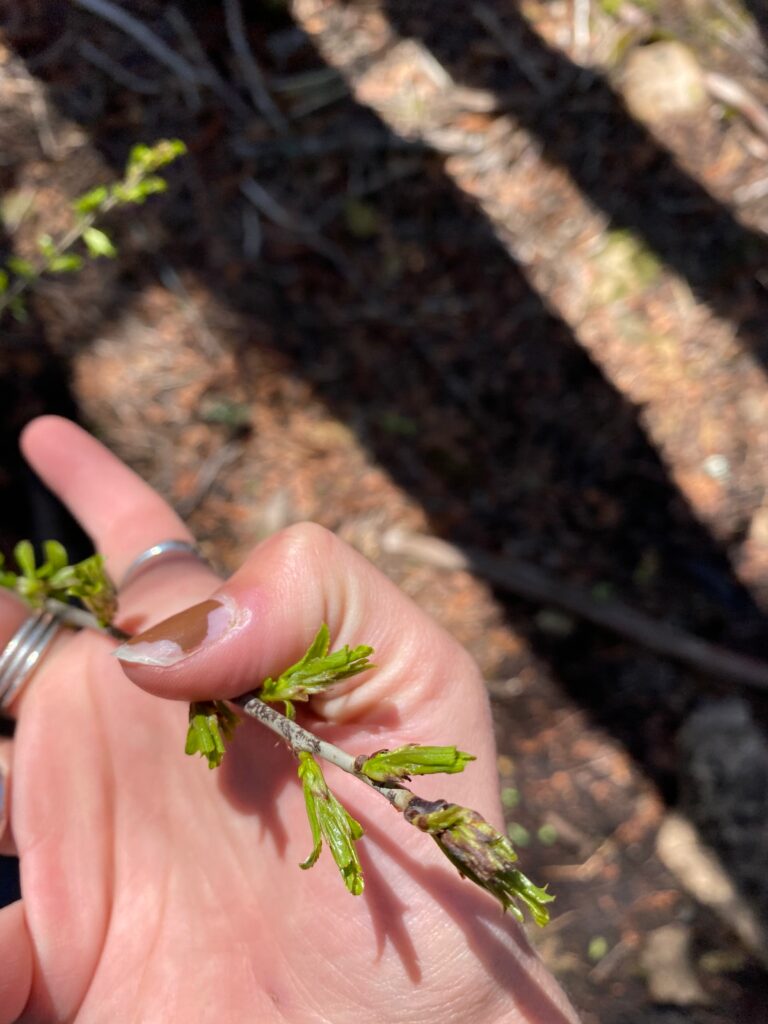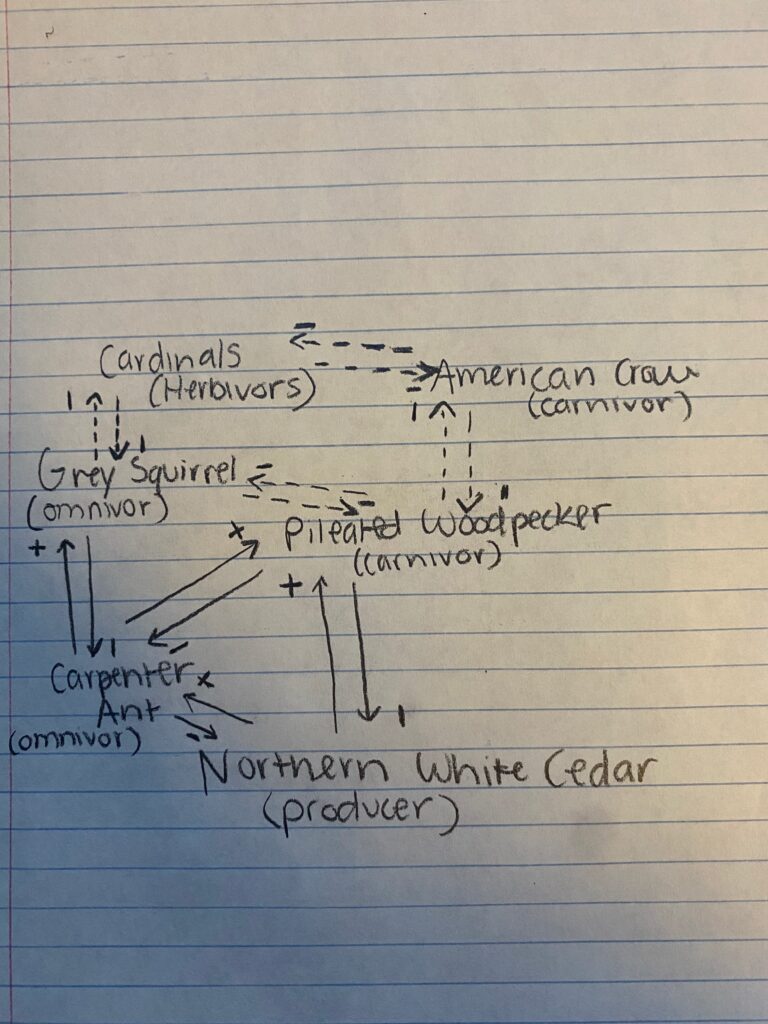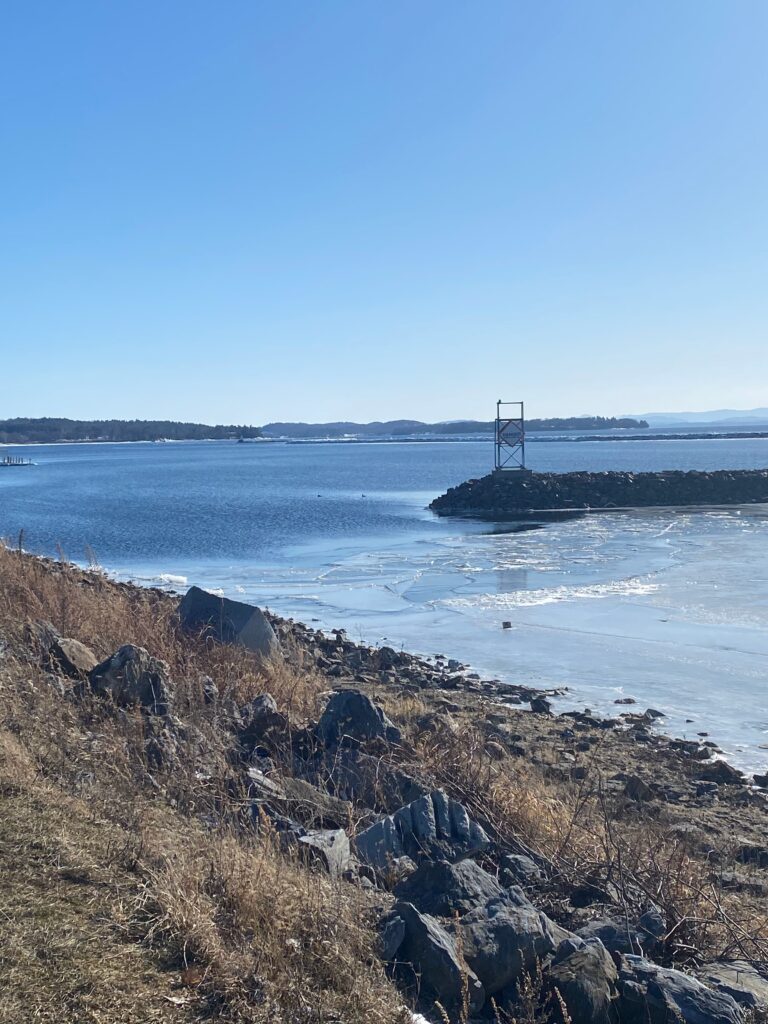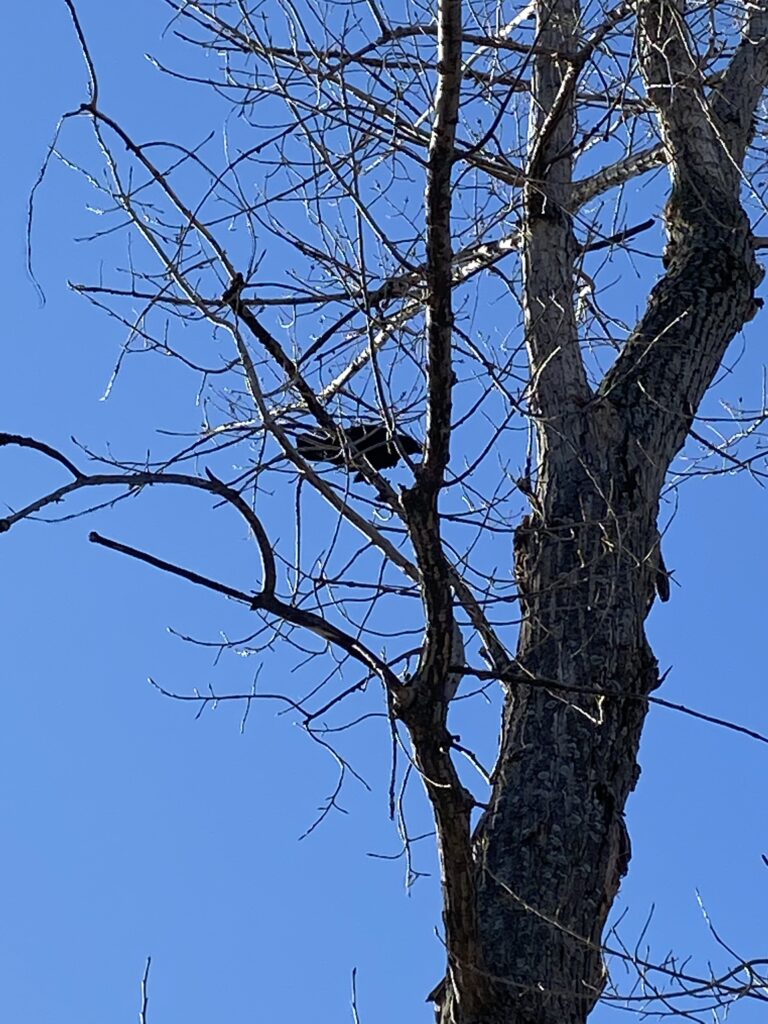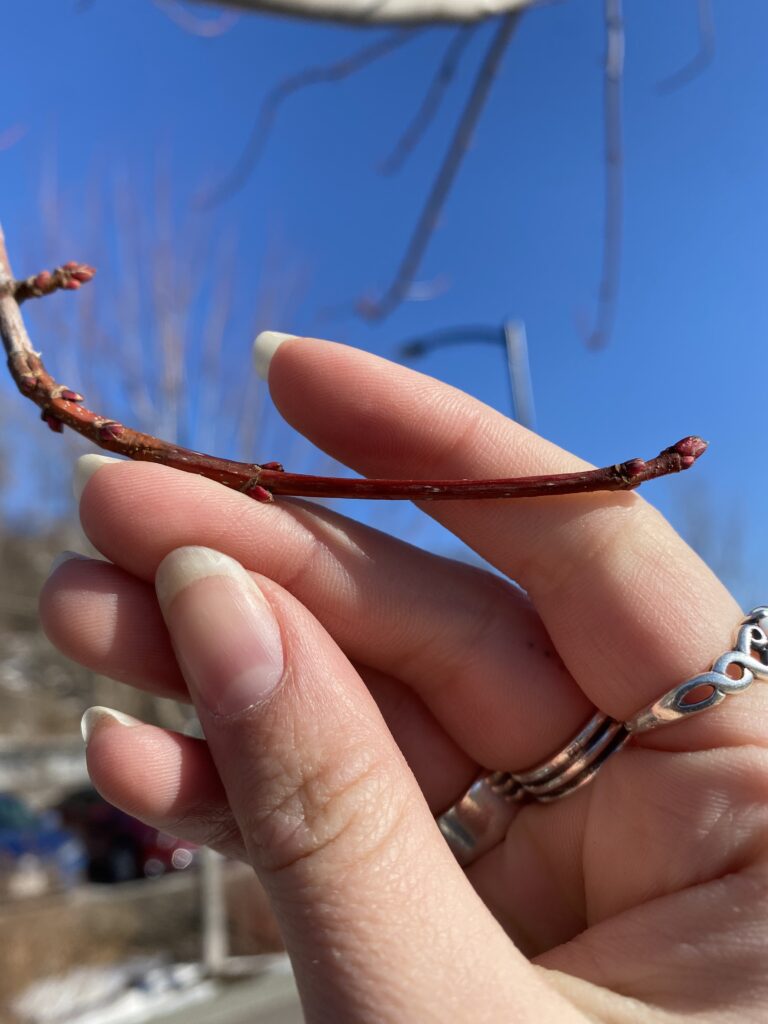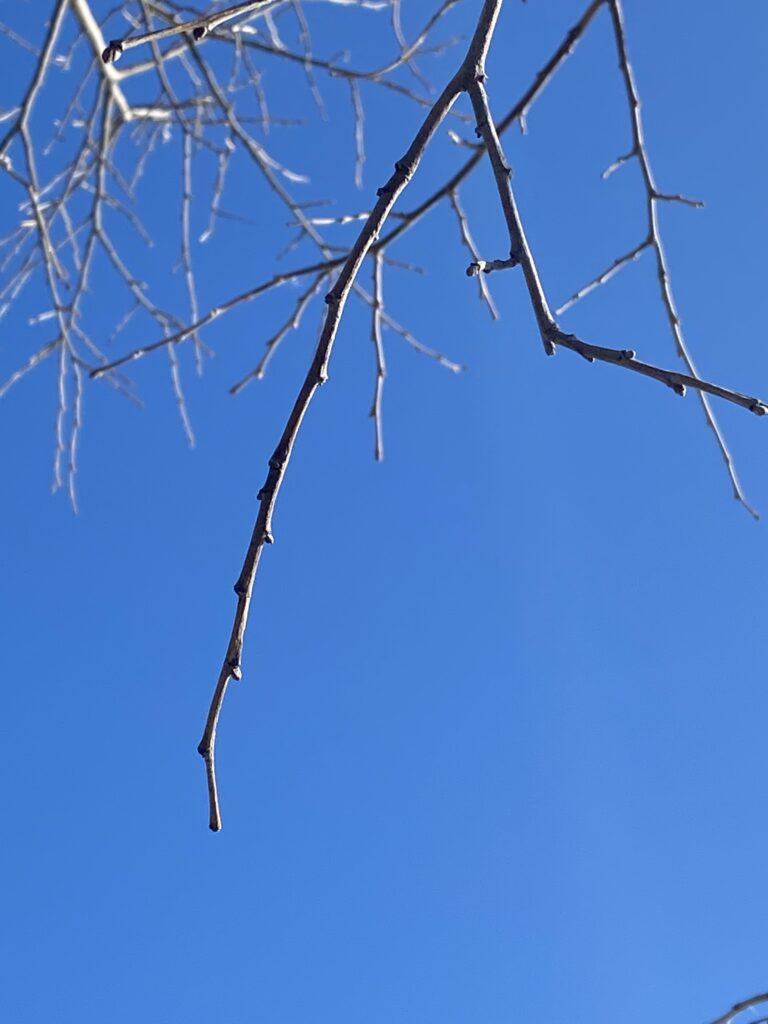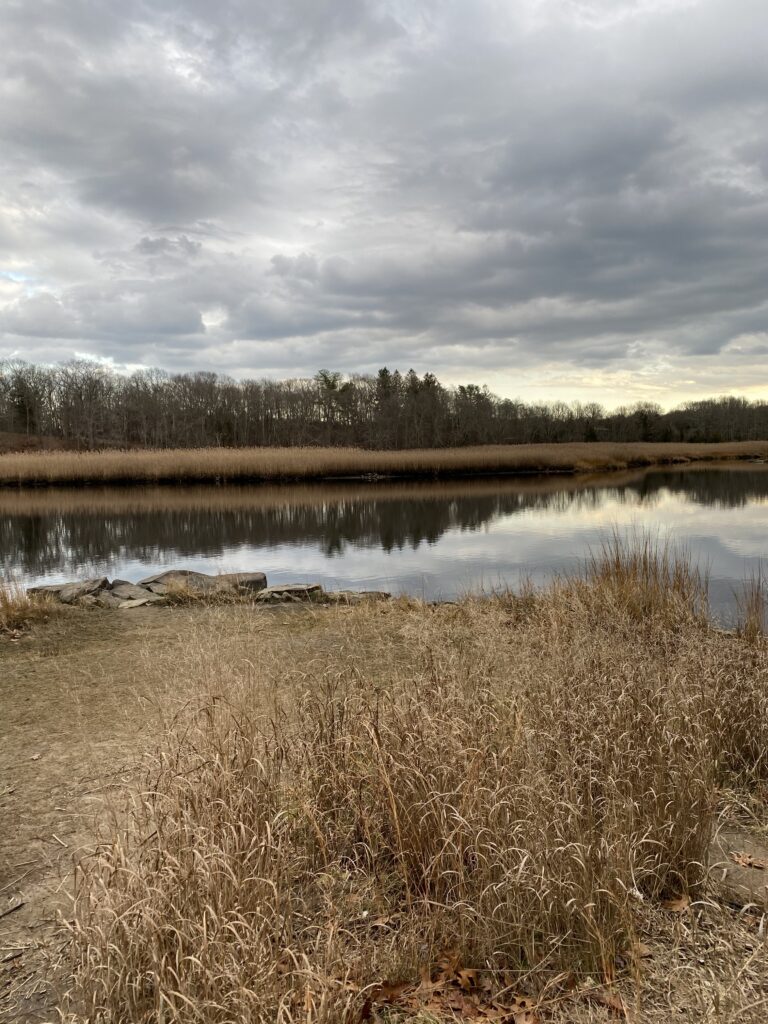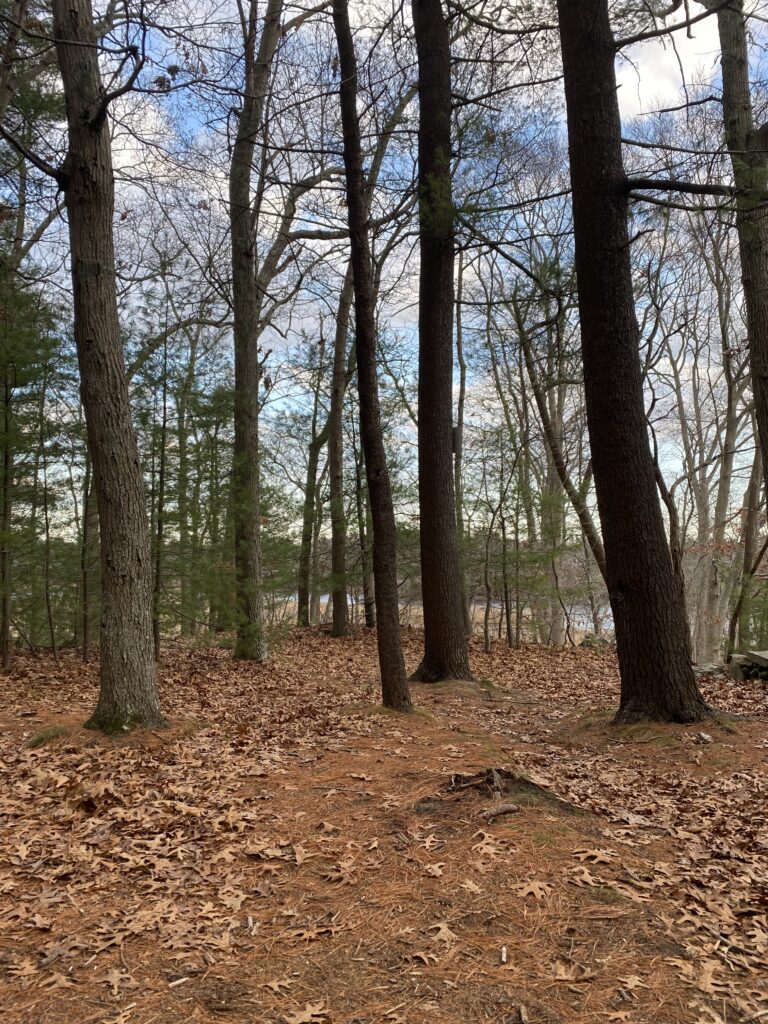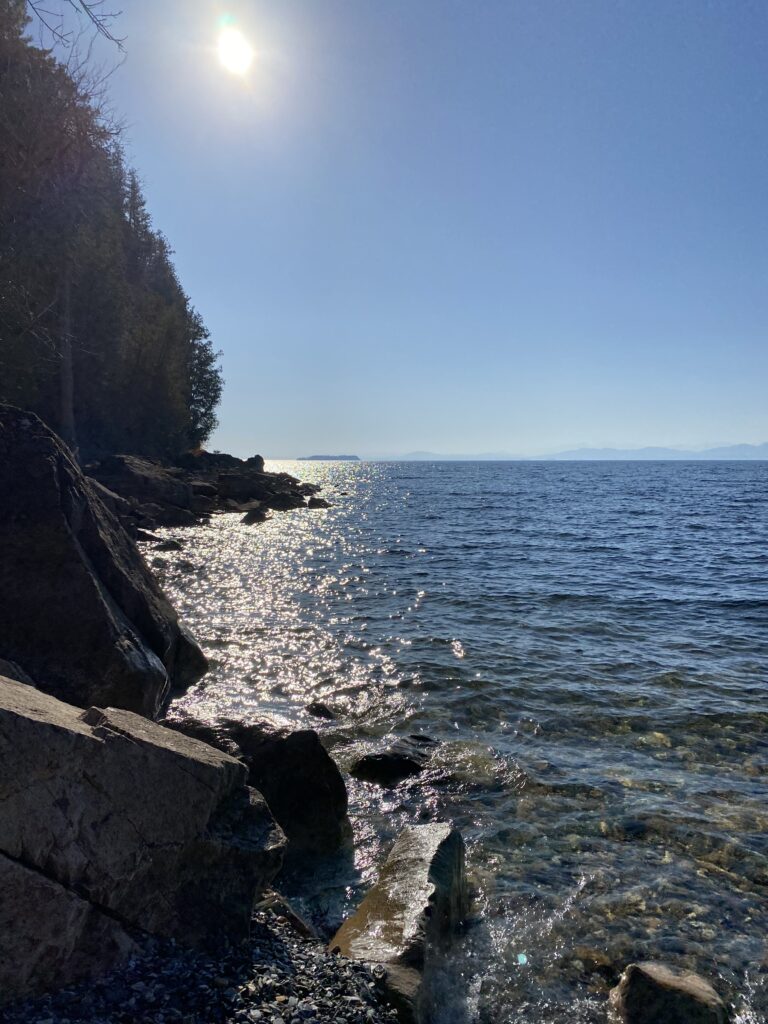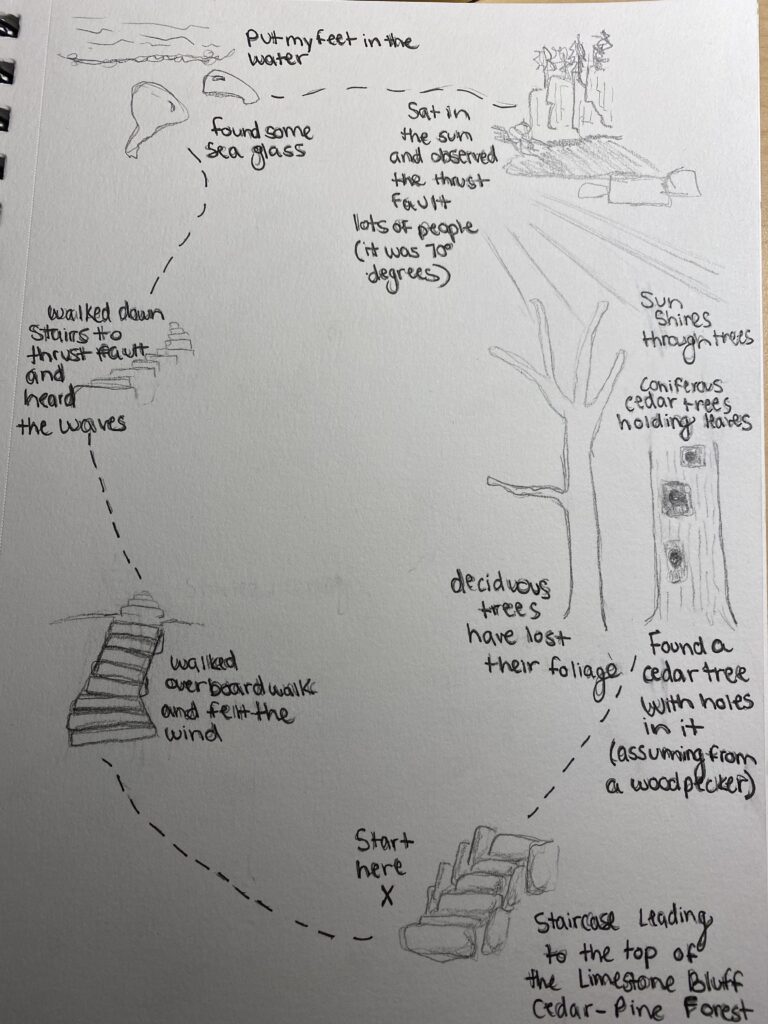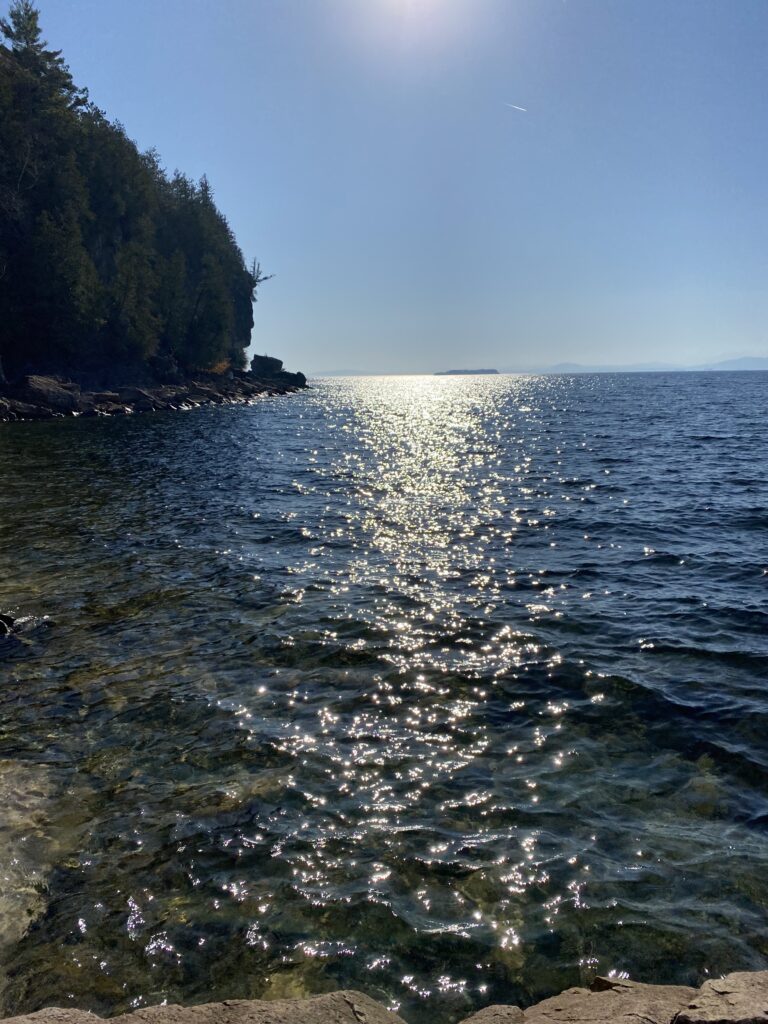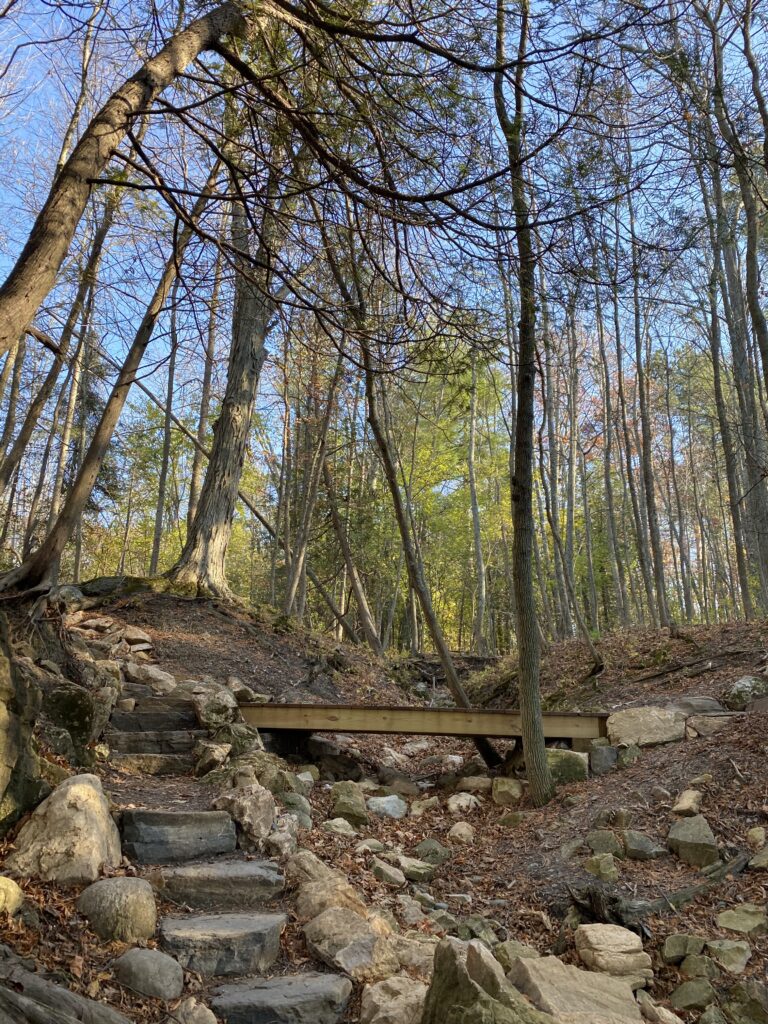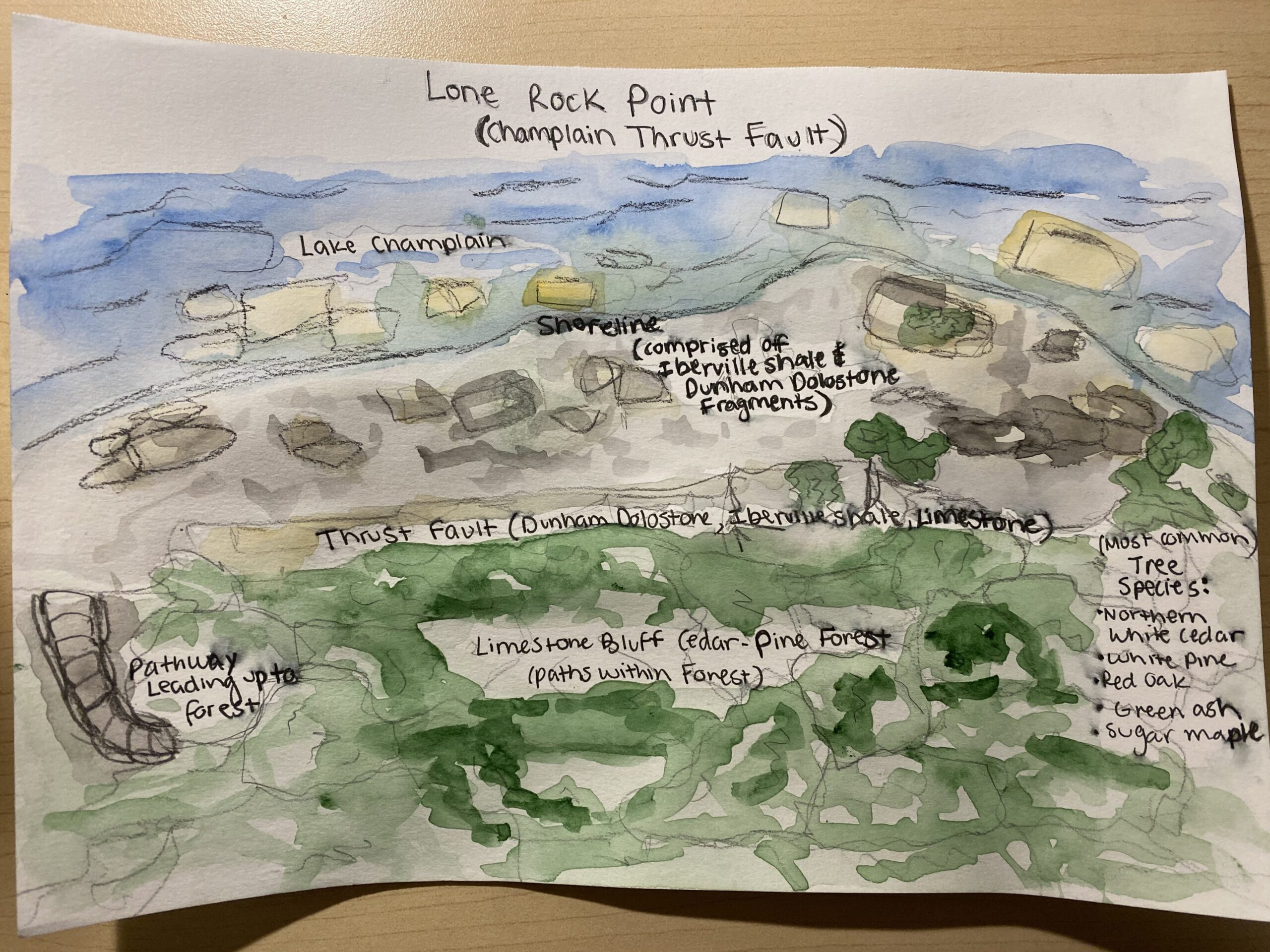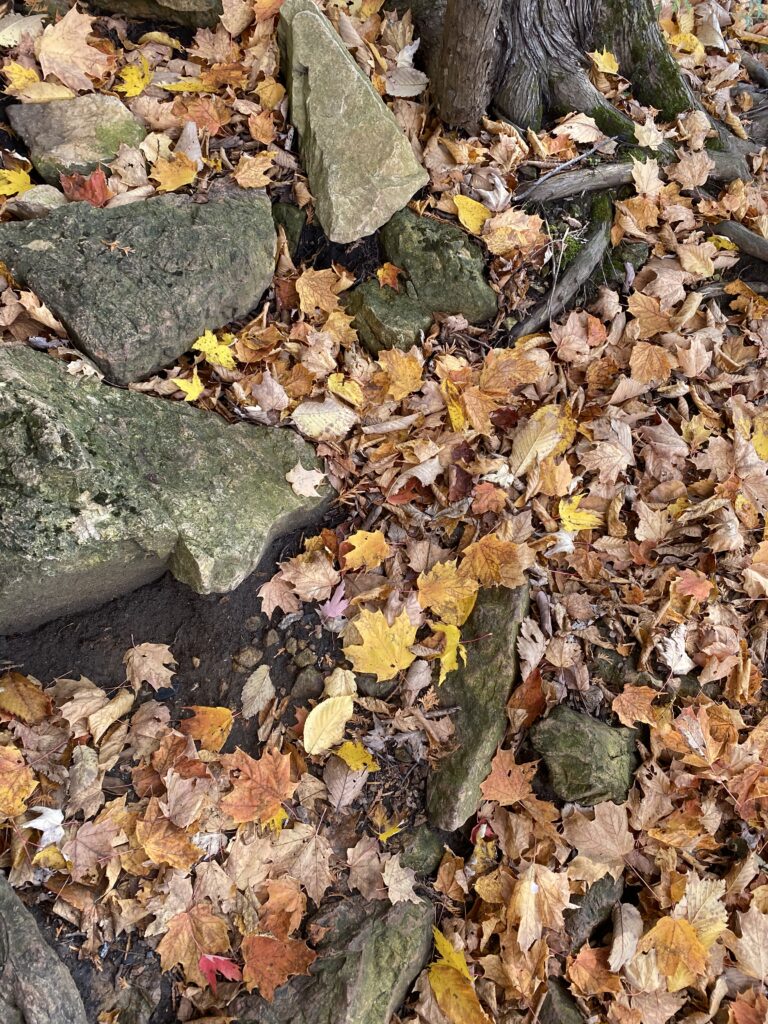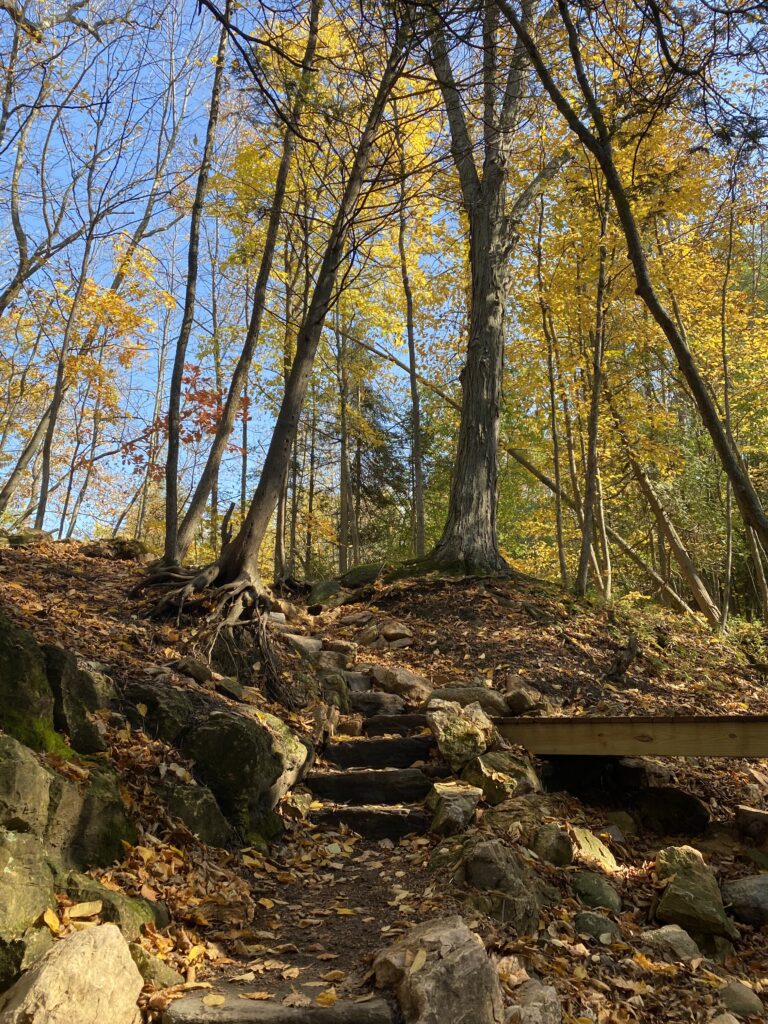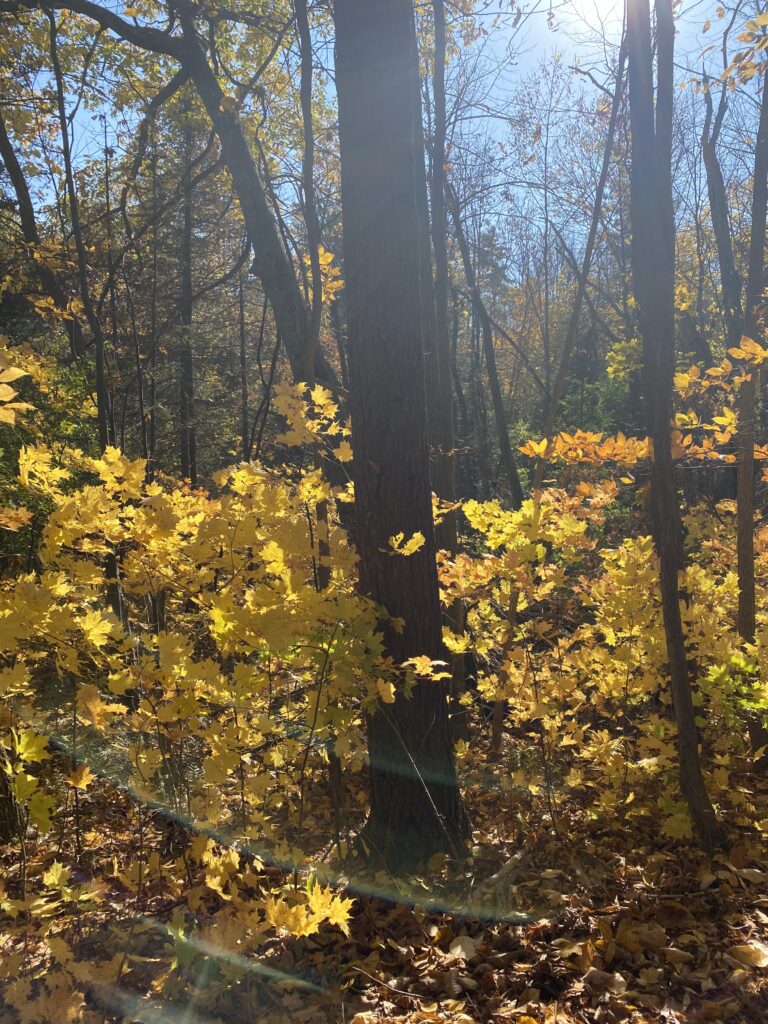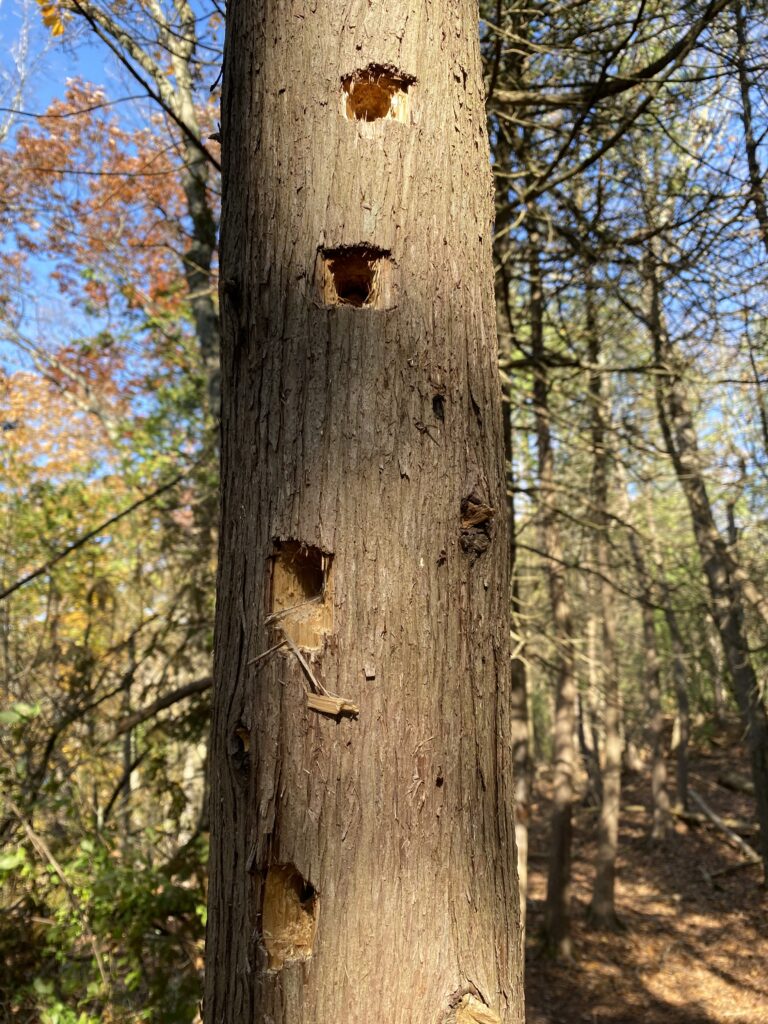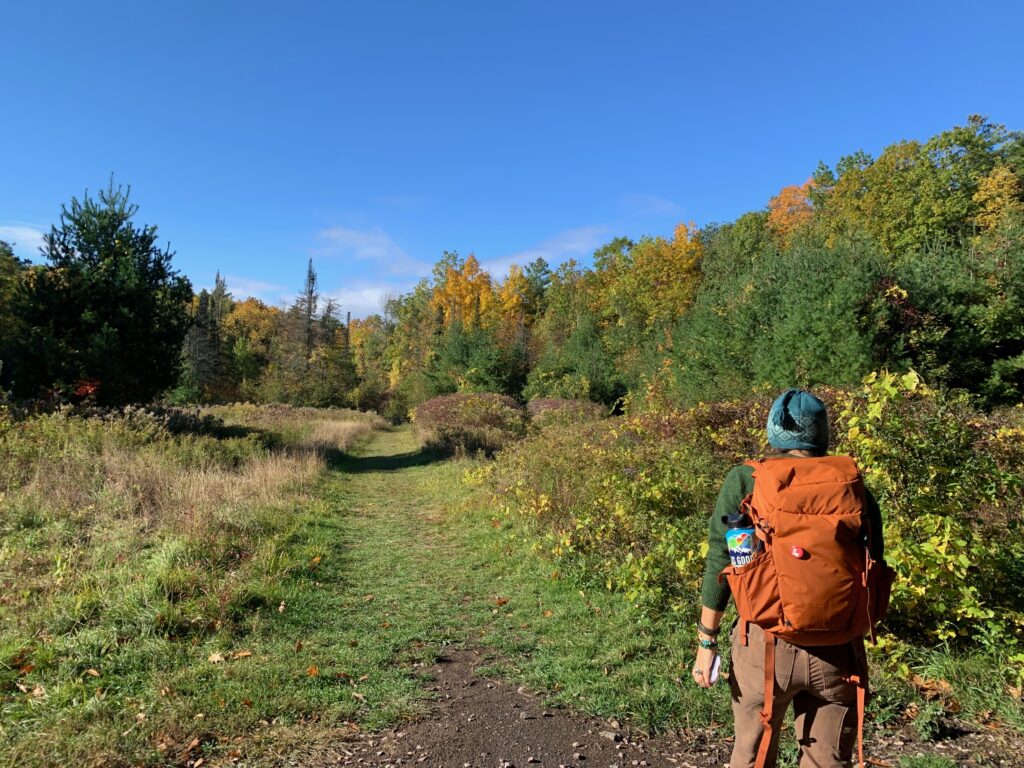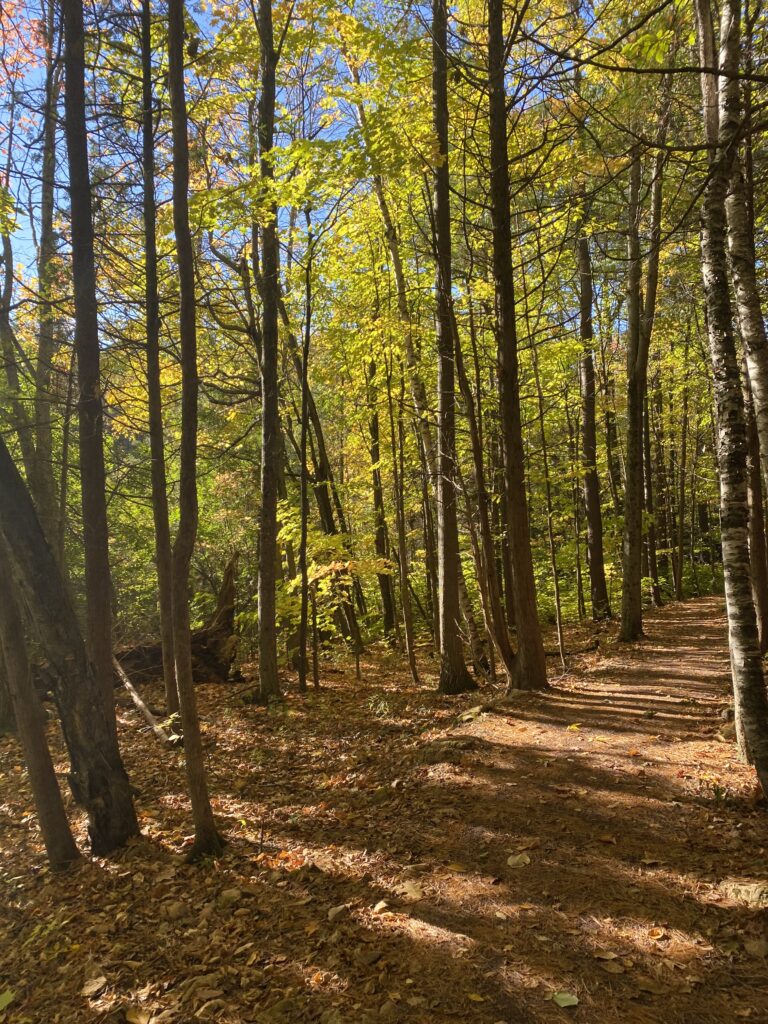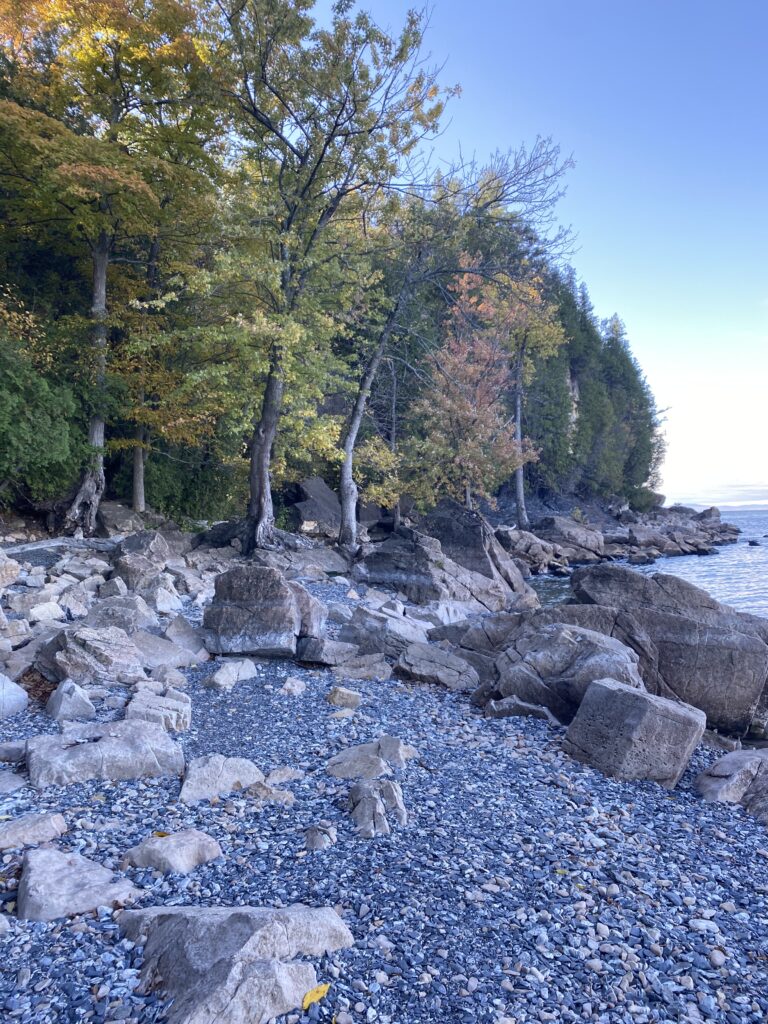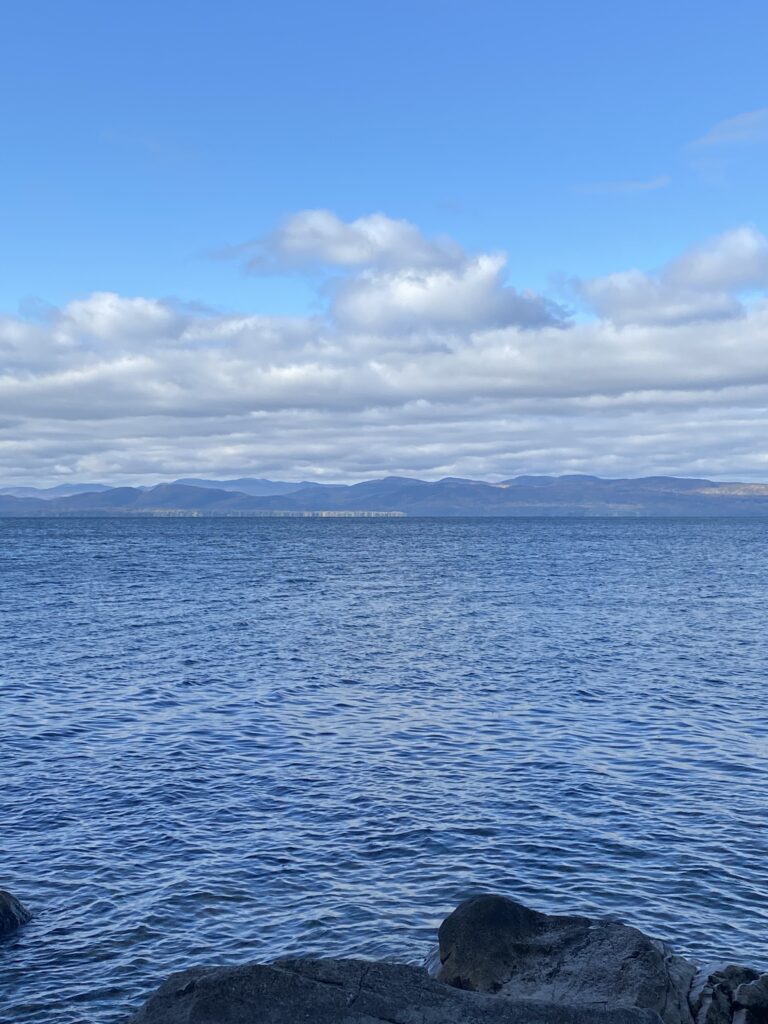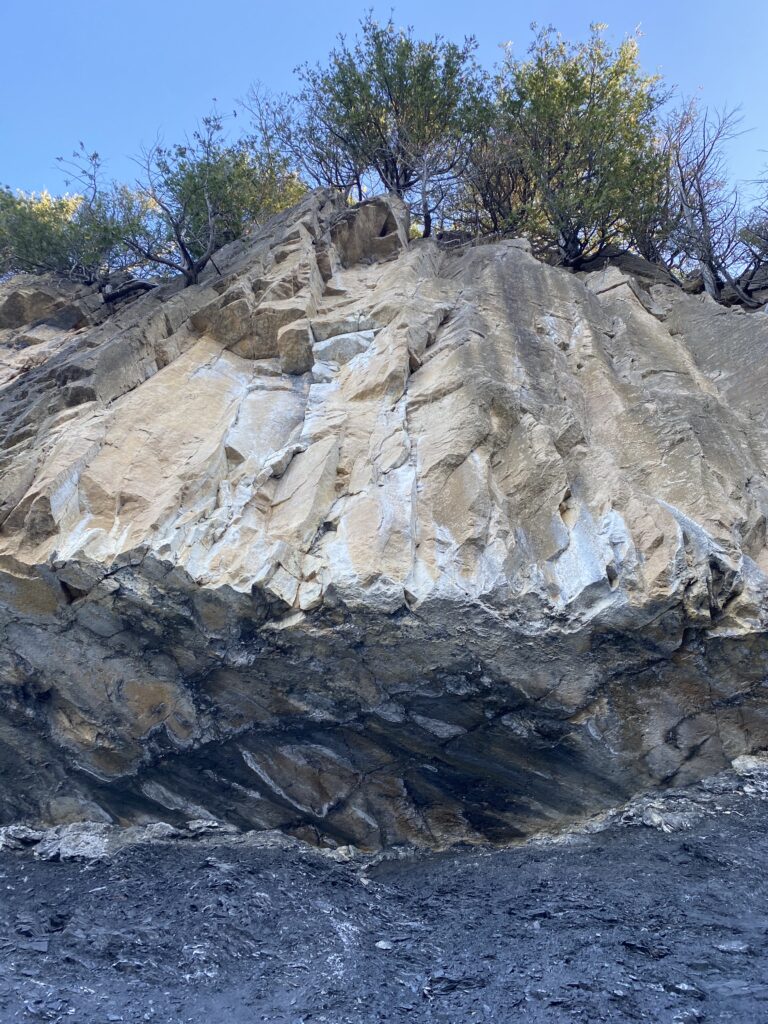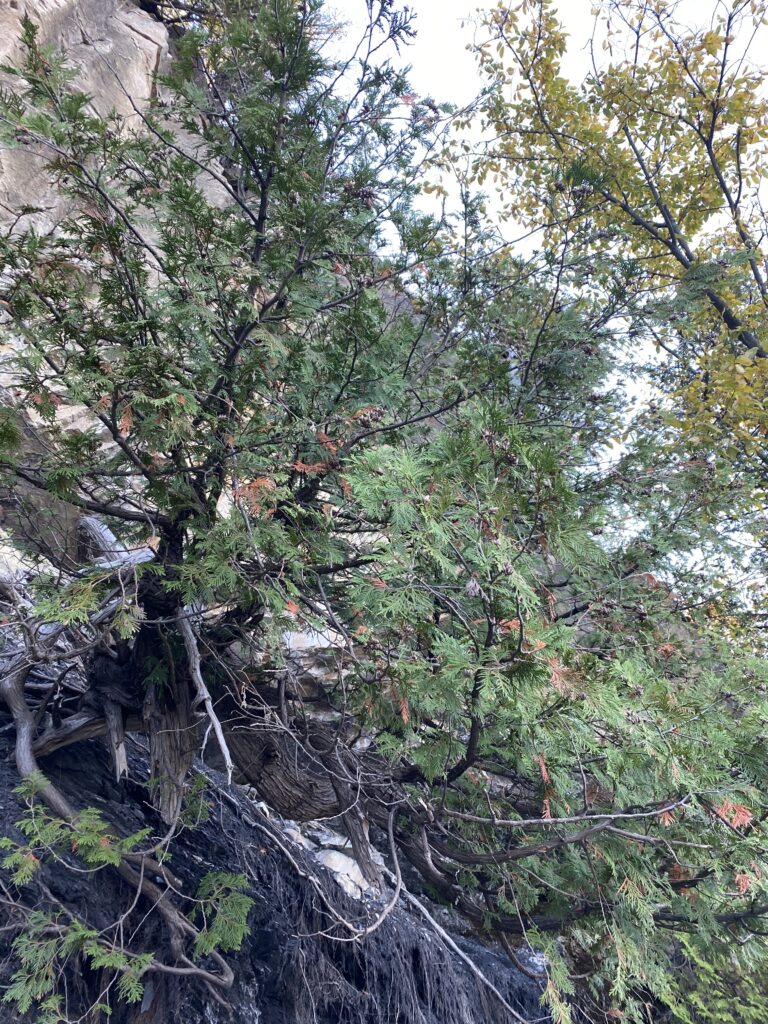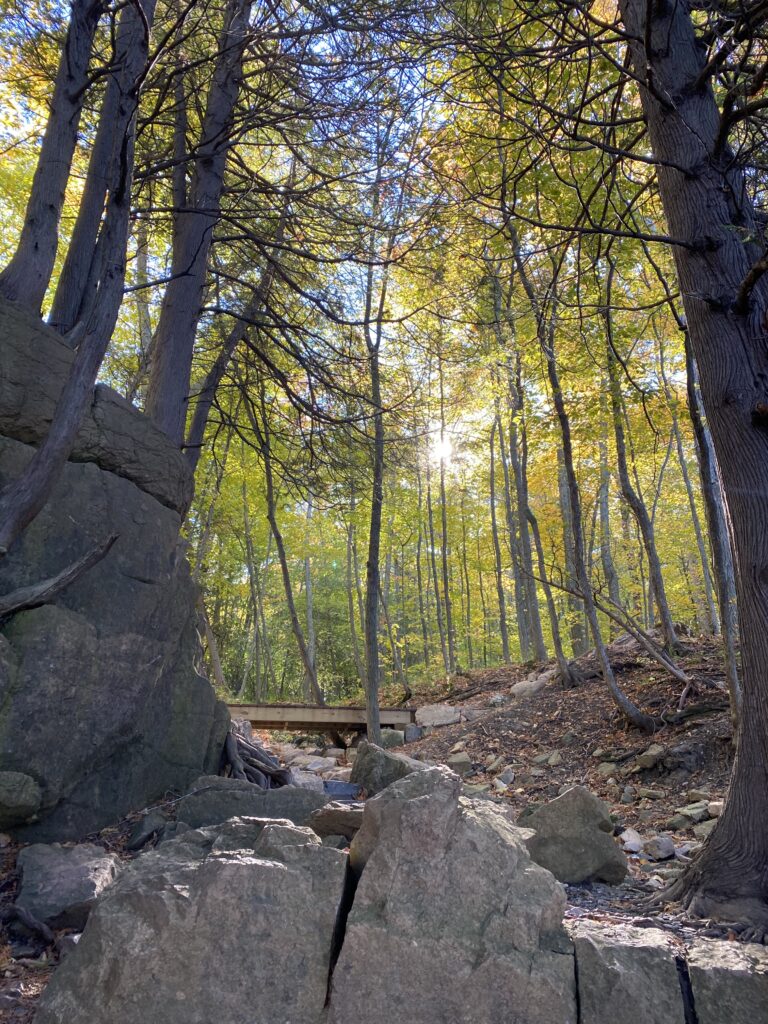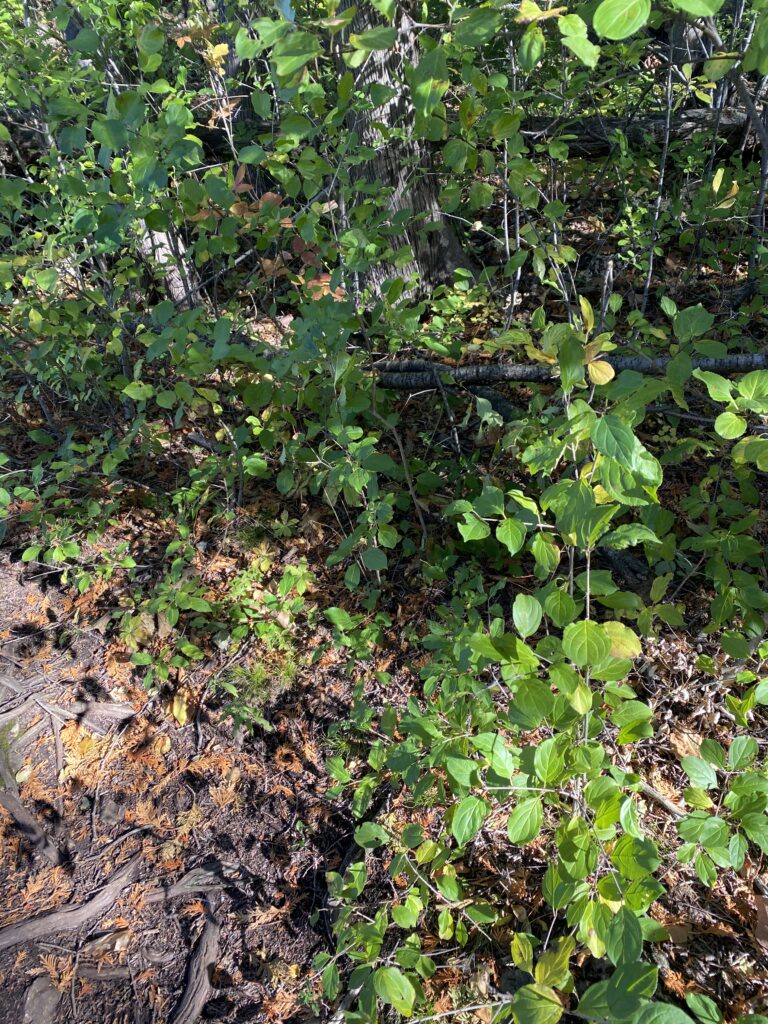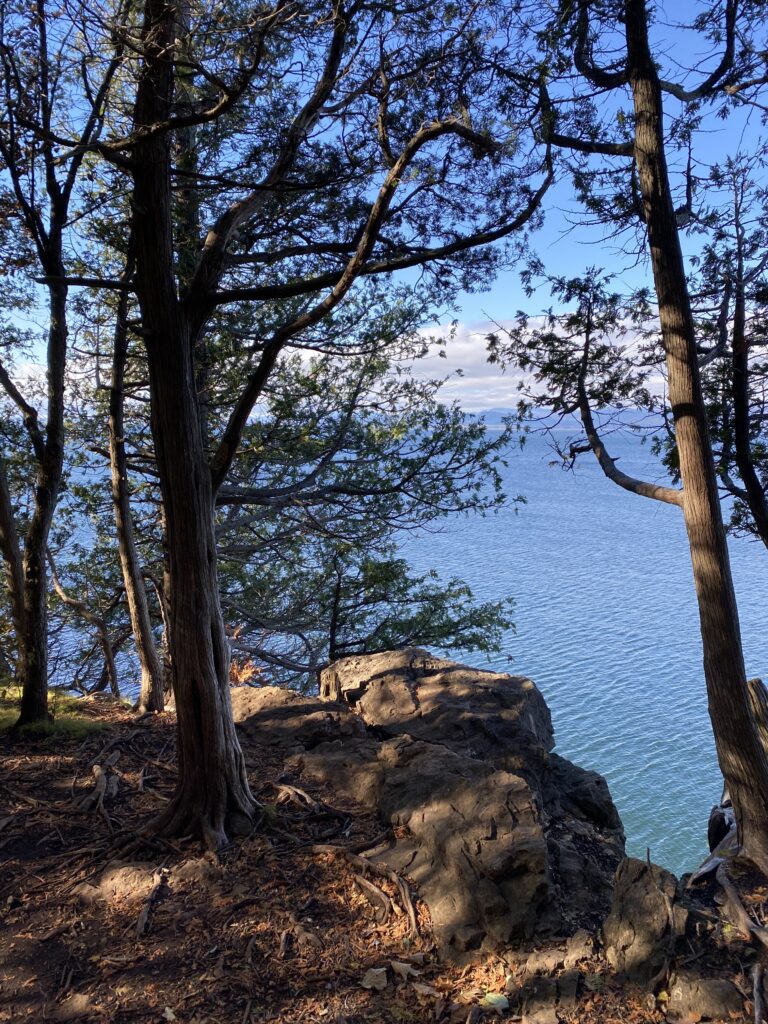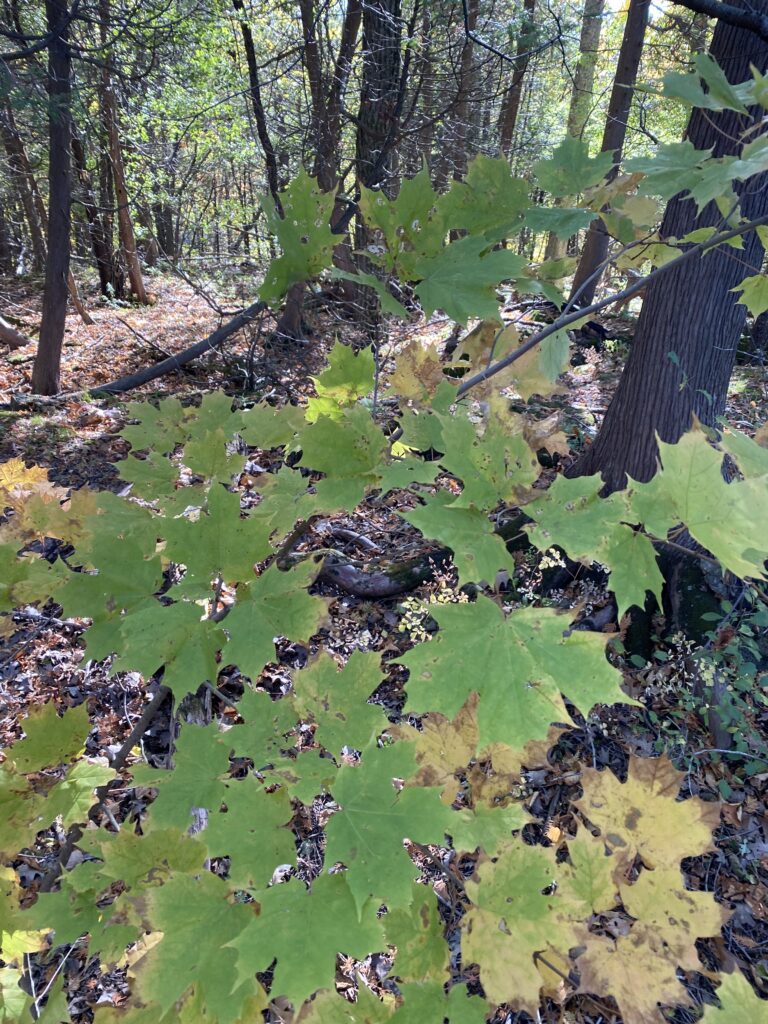Final Phenology Post
I got to visit Rock Point this week the day before I went home for the summer. As the spring season comes to an end it was easy to see some changes in the phenology of the Thrust Fault. The leaves of the trees had started to turn green again, there were birds chirping, groups of people were walking around observing the nature and taking advantage of the good weather, and there was lots of pollen sitting on the surface of the water. During my visit I was able to spot a cardinal and Blue Jay chasing after one another, and saw many trees in bloom or growing new leaves, such as Sugar Maples. There was also some Buckthorn growing in, an invasive species.
Over the course of the year I have learned a lot about how nature and culture are intertwined at Rock Point. For starters, Rock Point is used as a school for students, children being able to spend the day outside and explore and learn about nature. It is also a great resource for the community of Burlington, with public trails and gardens for people to explore. Rock Point is not only a place where people can go to witness the beautiful scenery of Vermont, but also holds many educational opportunities for Vermonters, tourists, students, or any person wanting to learn about ecology and the environment. The Thrust Fault is a great place for people to see the geology of Vermont first hand and understand how it was formed, as well as the unique ecosystem that it holds.
As I continued to explore Rock Point and become familiar with the land, I became more and more attached to the Thrust Fault and felt more connected to the natural environment. The first time I visited the Thrust Fault I was in absolute awe of the land and was completely drawn towards it, knowing I had to choose it as my phenology spot. I not only appreciate the ecological aspects I have learned about at Rock Point, but also feel spiritually connected to the land, knowing that I am a part of nature and have developed such a strong relationship to this location. Every time I visit Rock Point I feel such a sense of gratitude towards the land and all it does for us, and would definitely consider myself to be a part of the Thrust Fault. I feel so thankful that this phenology blog brought me closer to Rock Point and gave me my new favorite spot to visit in the Burlington area.
